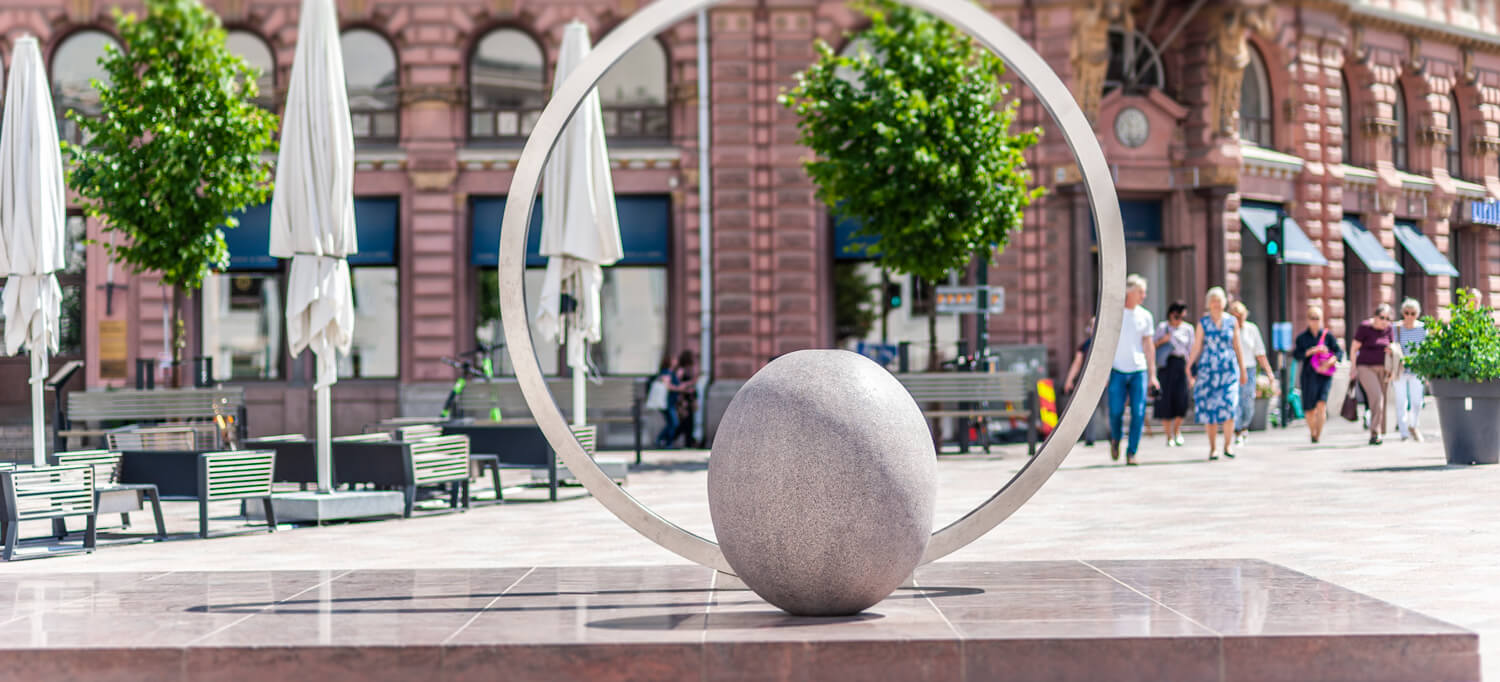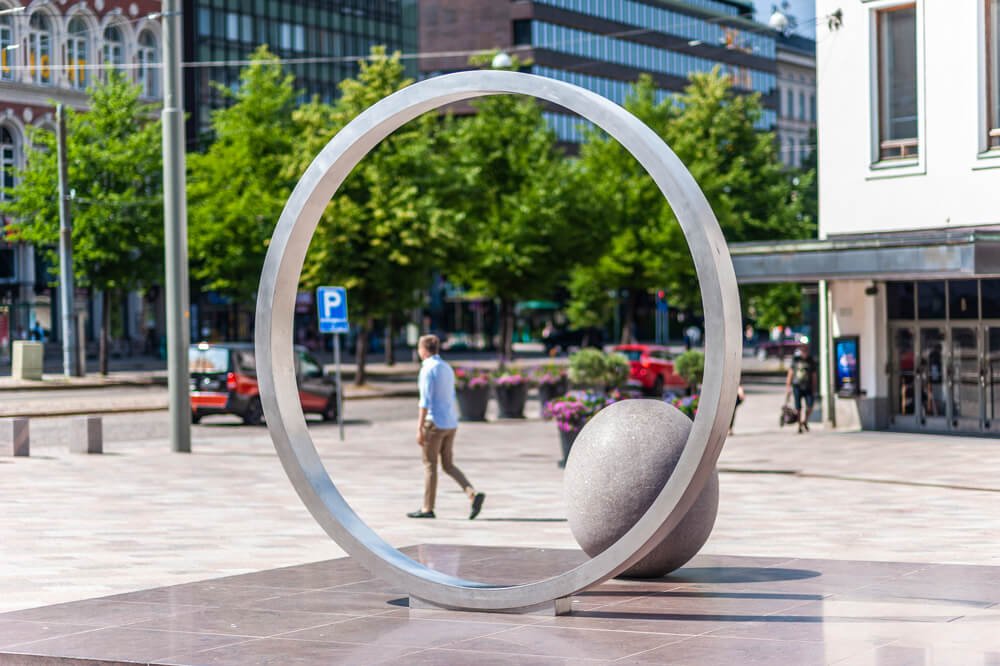Erottaja Square is located in the Kaartinkaupunki district, on the south and west sides of the Swedish Theatre (Svenska Teatern). The square is bordered by Mannerheimintie, the Swedish Theatre building, Esplanade Park, and street Eteläesplanadi, to the south by the lower slope of Erottajankatu, and to the north-west by Pohjoisesplanadi.
Erottaja in the past
Until the late 18th century, the area where Erottaja now stands was used for residents’ cultivation plots. The most important structure in the area was a road junction. From the then Turku Road branched off a local road leading to the Hietalahti harbor. This is likely the origin of the area’s Swedish name “Skillnaden”, which was translated into Finnish as Erottaja (“the separator” or “the divide”).
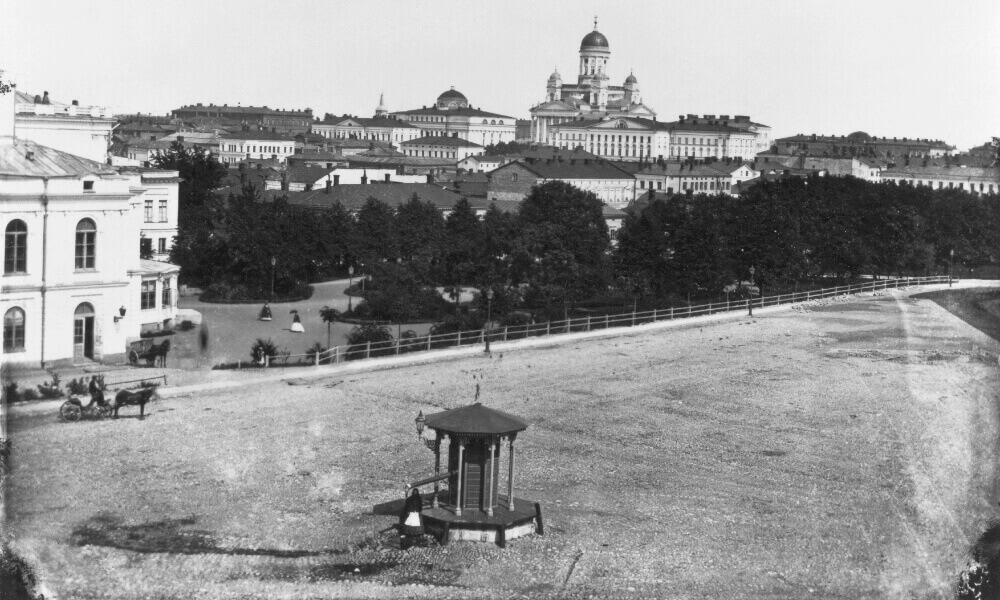
In the latter half of the 19th century, Erottaja was already part of the planned urban structure. The square was considerably larger, fully paved with cobblestones, and illuminated. It was adorned with a public well with a shelter. In 1850, a theater designed by architect G.T. P. Chiewitz (1815–1862) was built on the square. The theater burned down in 1863, but it was rebuilt and its appearance has since been altered several times. The current form of the Swedish Theatre dates from 1936. The extension was designed by architects Eero Saarinen and Jarl Eklund. The building’s light color and its smooth, unornamented surface emphasize its dominant presence at Erottaja. The lindens in front of the theater were planted in the 1970s.
Over the years, Erottaja has undergone many transformations. Before its most recent renovation, it had fallen into something of a decline. The square hosted, among other things, a kiosk-like break room for bus drivers, the terminal stop of bus line no. 20, and a service ramp for the Stockmann department store. This central square was paved with asphalt.
A change in the zoning plan from street space to square made the renewal of Erottaja possible. Its cultural-historical, architectural, and urban significance was officially recognized. Erottaja was incorporated into the pedestrian city center and the urban space of the Esplanadi.
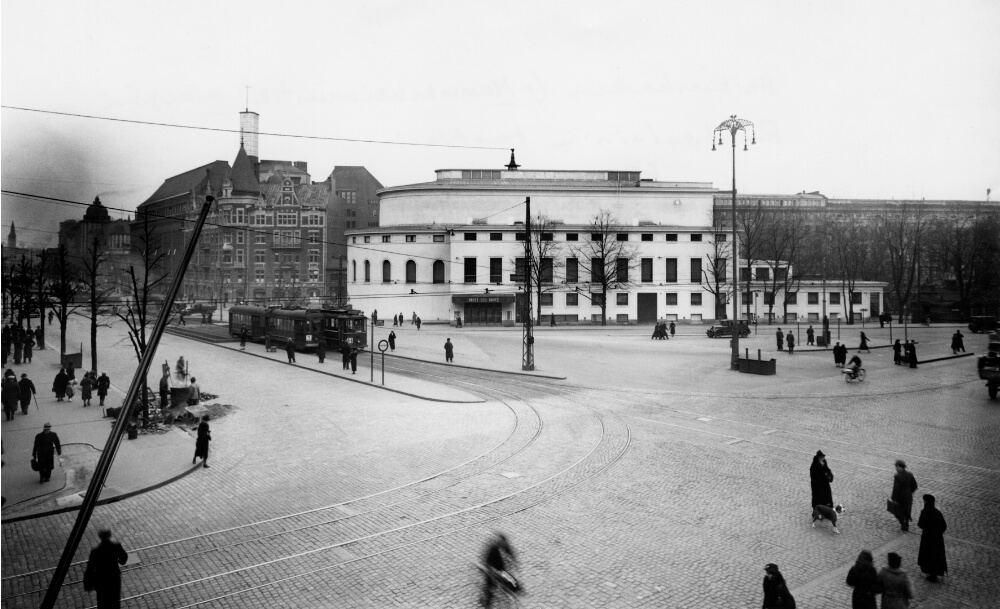
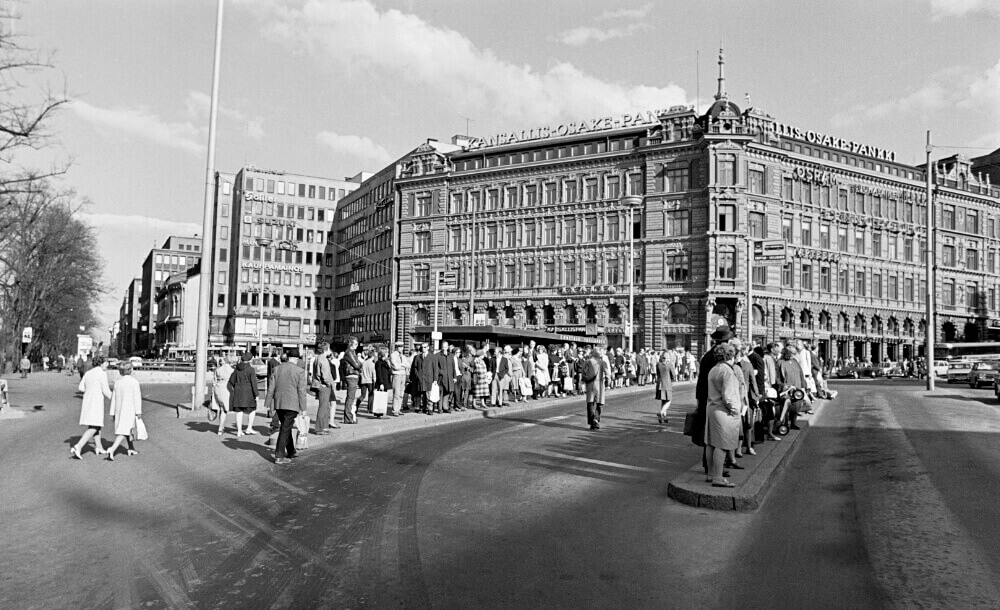
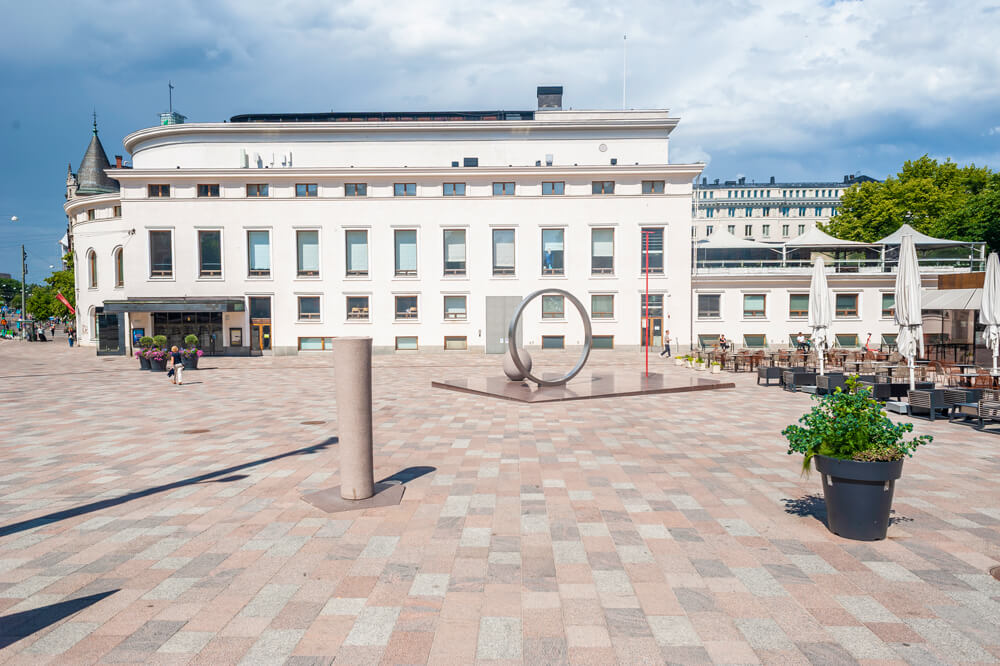
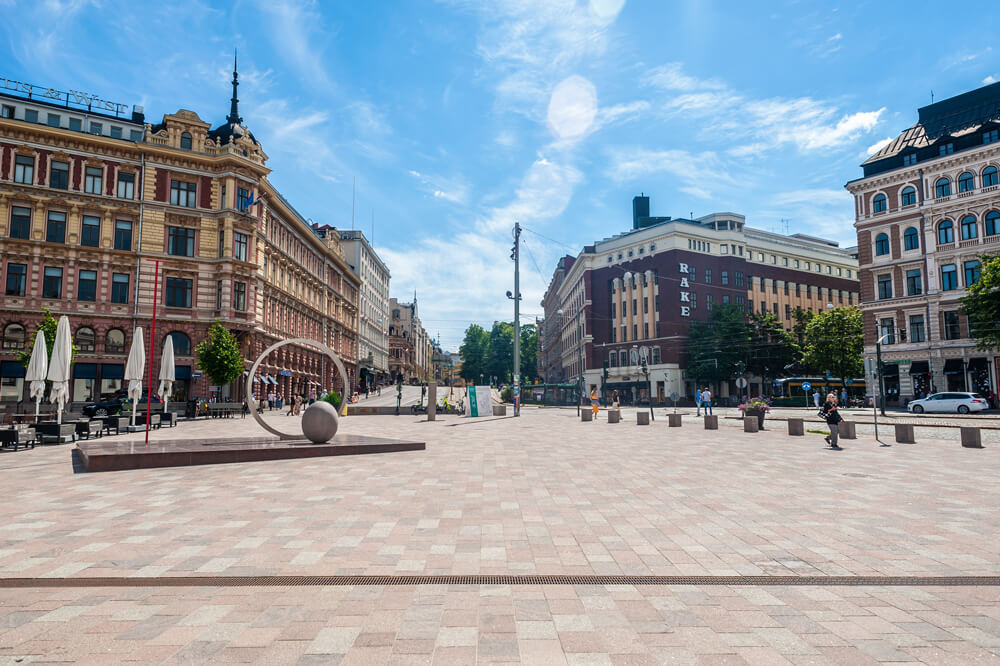
Erottaja today
In the 2018–2019 construction project, Erottaja Square was transformed into a stylish, car-free urban space designed for leisure and pedestrian use. It now connects seamlessly with Esplanade Park and the surrounding streets. The central and edge zones of Mannerheimintie, as well as the tree rows along Pohjoisesplanadi, were preserved. Seven new lindens were planted along the edge of Eteläesplanadi. The old lindens in front of the theatre received new growing beds and were surrounded with circular seating benches.
Pedestrian and cycling connections were improved. A completely new cycle path was added along the edge of Eteläesplanadi. The square now features both a city bike station and bicycle parking spaces between the trees. The bus stop and the unsightly drivers’ break room were removed. A new traffic-light-controlled pedestrian crossing was built across Mannerheimintie, linking Erottaja to Bulevardi.
The entire square was paved with multicolored Finnish natural stone slabs. From the park benches in front of the new lindens, one can observe the bustle of the square. Near the benches are two information boards that tell about Erottaja Square and a sculpture project. Low natural-stone bollards mark the boundary of the square towards Mannerheimintie. In summer, the edges of the square are decorated with lush flower boxes.
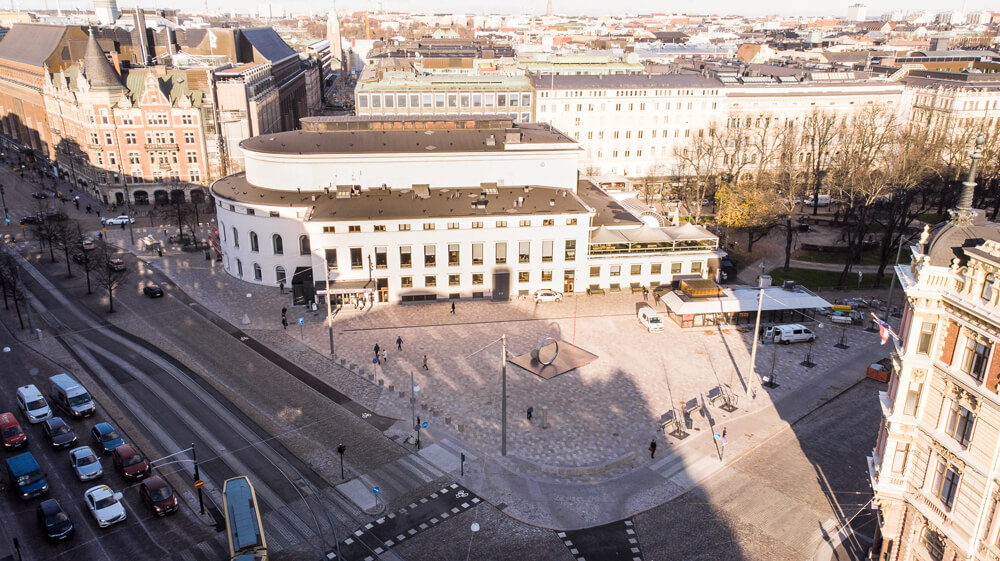
A striking four-part sculpture ensemble became the landmark of the square. The series, Tro Hopp Kärlek (Faith, Hope, Love), was created by the acclaimed Swedish sculptor Eva Lange (b. 1935) and is made of granite, iron, and steel. The sculpture project was part of the Two Countries – One Future initiative, which celebrated Finland’s 100th anniversary. The work was funded by Finnish and Swedish foundations, funds, companies, and private individuals, and was donated to the City of Helsinki, making it part of the HAM Art Museum’s collection. As part of the project, Stockholm received a work by Finnish artist Marja Kanervo, Vuosi Luvut, which was unveiled at Engelbrektsplan in central Stockholm during the centennial year of 2017.
The stylish café and cocktail bar Kiska, designed by architect Stefan Ahlman, with its outdoor terraces, makes spending time on the square a pleasant experience. Kiska is open according to the weather. Events at the square are supported by underground service and technical facilities, including electrical rooms, which are accessible via a service staircase built alongside Kiska.
Images of Erottaja Square in the photo archive of the Helsinki City Museum

